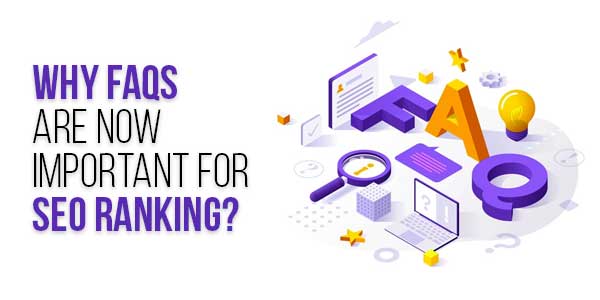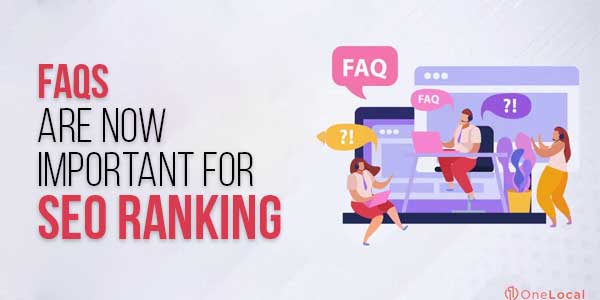
Let me paint you a picture. It was 2 AM, and I was staring at my Google Search Console dashboard for what felt like the hundredth night in a row. My traffic had plateaued. I was writing what I thought was great content, doing all the “right” SEO things, but I just couldn’t seem to crack the top of the search results.
Sound familiar?
Then, almost by accident, I stumbled onto something. I noticed that a few of my older posts that had a simple “Frequently Asked Questions” section at the bottom were consistently getting a trickle of traffic. Not only that, but they were also ranking for a few extra, unexpected keywords. Interesting, right?
So I dug deeper. I started experimenting. And what I found completely changed my approach to SEO. It turns out, in our quest for complex backlink strategies and perfect keyword density, many of us are sleeping on one of the simplest and most powerful SEO assets available: the humble FAQ section.
Table of Contents
It’s Not Your Grandma’s FAQ Anymore: How FAQs Evolved
Remember the old-school FAQ pages? They were usually a buried, dusty corner of a website, filled with dry, corporate questions like “What year was our company founded?” and “What are your business hours?” They were designed for customer service, not for Google. And honestly, they were boring.
But Google’s gotten smarter. Way smarter. Its entire mission is to understand user intent and provide the best, most direct answer possible. This shift towards semantic search and understanding the long-tail keyword nuances of human language is what breathed new life into the FAQ.
Think about your own search habits. When you have a problem, you don’t just type “WordPress error.” You ask Google a full-blown question: “Why is my WordPress site showing a critical error?” or “How do I fix the white screen of death on WordPress?”
Google loves these questions. And if your content provides the answers, Google loves you.
The Direct Line to “People Also Ask”
Ever noticed those handy little boxes that pop up in search results called “People Also Ask” (PAA)? They’re like a Russian nesting doll of user queries. You click one, and another set of questions unfolds.
Where do you think Google gets those questions? From scraping websites that have structured their content in a Q&A format. By creating a well-structured FAQ section using schema markup (more on that later), you’re essentially holding up a giant sign to Google that says, “Hey! The answers to everyone’s burning questions are right here!”
Getting featured in a PAA box is like winning the SEO lottery. It’s prime digital real estate that can send your click-through rates soaring.
Beyond Traffic: The Multi-Layered SEO Benefits of FAQs
Okay, so FAQs can help you rank for more questions. That’s cool. But the benefits run so much deeper than that. Let’s break it down.
1. The Keyword Goldmine (Without the Stuffing)
We’re all hunting for those juicy, low-competition keywords, right? Your audience is literally handing them to you on a silver platter.
Every question a user emails you, every comment on your blog post, every query in your website’s search bar is a potential FAQ. These are naturally phrased, long-tail keywords that you might never have thought to target. Integrating them into your content makes it incredibly relevant and comprehensive.
It’s the opposite of keyword stuffing. It’s keyword answering.
2. The Dwell Time Dynamo
Google uses user behavior as a ranking signal. If someone clicks on your result, immediately hits the back button (a “pogo-stick”), that tells Google your content wasn’t helpful. But if they click, read your article, and then scroll down to engage with your FAQs, you’ve just significantly increased your dwell time.
You’ve answered their primary question and then preemptively solved their next three. You’ve become a destination, not just a quick stop. This kind of engagement is pure SEO rocket fuel. It’s a signal that you’ve created a fantastic landing page for that query, even if the page wasn’t originally designed as one.
3. The Internal Linking Powerhouse
FAQs are the perfect opportunity for natural, contextual internal links. Answering a question about “the best email marketing software” gives you a chance to link to your detailed review of different platforms. This helps users navigate your site, distributes page authority throughout your site, and helps Google understand the architecture and topical relevance of your content. It’s a core part of a strong off-page SEO strategy that actually begins on-page.
4. The Voice Search & Featured Snippet Sweet Spot
“Hey Google, how do I…” Voice search is exploding, and it’s almost entirely question-based. FAQ content is perfectly formatted to answer these queries concisely and directly.
Furthermore, Google’s Featured Snippets—those answer boxes that appear at the very top of results—often pull directly from content structured in a Q&A format. By formatting your FAQs properly, you’re dramatically increasing your chances of snagging that coveted position zero.
I used to see my FAQ section as an afterthought. Now, I plan it alongside my article outline. It’s no longer just about answering questions; it’s about anticipating the entire conversation a user wants to have with my content.
How to Craft FAQs That Google (And Real Humans) Will Love
Okay, you’re convinced. But you can’t just throw a list of random questions on a page and call it a day. Here’s how to do it right, based on my own trial and error.
Step 1: Mine for Real Questions
Don’t guess what your audience wants to know. Find out. Here’s where I look:
- Blog Comments: Goldmine. If one person asks, ten others were probably thinking it.
- Customer Service Emails: The motherlode of real user problems.
- Google Search Console: Check the “Performance” report. What queries are you already getting impressions for but not ranking highly? These are your low-hanging fruit.
- AnswerThePublic & “People Also Ask”: Use these tools to see the exact questions people are asking around your topic.
Step 2: Structure for Both Humans and Bots
This is the crucial part. You need to format your FAQs using schema markup. Schema is a special code (a type of microdata) you add to your HTML that helps search engines understand your content better.
For FAQs, you use the FAQPage schema. While it might sound technical, many SEO plugins (like Rank Math or Yoast SEO) make adding this a point-and-click operation these days. This markup is what makes your questions eligible to appear in those PAA boxes and rich results.
Step 3: Write Natural, Comprehensive Answers
Don’t write one-word answers. Provide real value. Your answer should be a mini-blog post—concise, helpful, and engaging. Use a natural, conversational tone. After all, you’re answering a question a real person would ask. This is your chance to showcase your expertise and build trust, which is ultimately what on-page SEO is all about.
Step 4: Integrate, Don’t Isolate
While a dedicated FAQ page has its place (for product or service-specific questions), the real SEO power comes from integrating FAQs directly into your blog posts and articles. Place them at the bottom of a post to address common follow-up questions, or weave them throughout the content to break up sections and provide immediate answers.

Real-World Example: My Own “Aha!” Moment
I had a post about starting a blog. It was doing okay, but it was stuck on page 2 for its main keyword. After my FAQ discovery, I went back and added a section with questions like:
- “How much does it really cost to start a blog?”
- “Can I start a blog without any technical skills?”
- “How do bloggers actually make money?”
I answered each thoroughly, added the FAQ schema, and built a few thoughtful backlinks to the updated post. Within three weeks, that post had jumped to the top of page 1. But more importantly, it started ranking for over 20 new long-tail question-based keywords. My organic traffic for that post increased by over 150%. The digital marketing for that post became self-sustaining.
The kicker? I didn’t change a single word of the original article. I just added the FAQs.
Are There Any Risks?
Like anything in SEO, there’s a wrong way to do it. Google’s guidelines are clear: your FAQ content must be visible to the user. Don’t try to hide it. It must be a genuine, helpful addition to the page. If you spam it with irrelevant questions or keyword-stuff your answers, you could get penalized for trying to manipulate search results.
Stick to the principle of being helpful first, and the SEO rewards will follow.
Frequently Asked Questions (FAQs)
What is the best way to find questions for my FAQ section?
The absolute best way is to listen to your actual audience. Scour your blog comments, customer support emails, and social media messages. Tools like Google Search Console (see what queries you get impressions for) and AnswerThePublic are also incredibly valuable for uncovering real questions people are asking.
Do I need to use schema markup for my FAQs to help SEO?
While your well-written FAQs can still help without it, schema markup is essential for unlocking their full potential. It’s the code that explicitly tells Google “this is a question” and “this is the answer,” making it eligible for rich results like People Also Ask boxes and featured snippets. It’s a non-negotiable for serious SEO.
Should I put FAQs on a separate page or within my blog posts?
Both! A dedicated FAQ page is great for general business or product questions. But for SEO, integrating FAQs directly into relevant blog posts is far more powerful. It allows you to target long-tail keywords specific to that topic, increase dwell time on that page, and provide a more comprehensive answer to the user’s search intent.
How long should my answers be in an FAQ?
Aim for comprehensive but concise. A paragraph or two is usually perfect. You want to fully answer the question without fluff, but also avoid a simple “yes” or “no.” Think of it as a mini-blog post. If the answer requires a huge deep dive, that’s a sign it might need its own dedicated article, which you can then link to from the FAQ.
Can FAQs really help me get backlinks?
Indirectly, yes! By creating a truly resourceful and comprehensive piece of content that includes FAQs, you’re building a more link-worthy asset. People are more likely to link to a page that answers every possible question on a topic. It also gives you more opportunities to earn natural backlinks from a wider variety of relevant keywords.
What’s the difference between an FAQ and a “People Also Ask” box?
Your FAQ section is the content you create on your website. The “People Also Ask” (PAA) box is a Google search feature that displays related questions from around the web. By using FAQ schema markup on your content, you are directly increasing the chances of your questions and answers being featured in those PAA boxes.
Will adding an FAQ section slow down my page speed?
Text is incredibly lightweight. Adding a text-based FAQ section with proper HTML markup will have a negligible impact on your page speed, especially compared to images or videos. The SEO benefits far, far outweigh any minimal performance cost. Keeping your site fast is crucial, but don’t let it stop you from adding valuable text content.
How many questions should I include?
Quality over quantity. Start with 3-5 of the most common and relevant questions for a given page. You can always add more later as you discover new queries from your audience. There’s no magic number, but avoid creating a massive, overwhelming list of 50+ questions that might frustrate users.
Can I use FAQs for local SEO?
Absolutely! For local business pages, FAQs are a perfect place to answer questions like “What are your hours?”, “Do you offer free estimates?”, “What areas do you serve?”, or “What is your most popular service?” This directly targets the questions local searchers are asking and provides immediate, useful information.
I’m convinced! Where should I start right now?
Pick your top 3 most important blog posts or service pages. Go through the sources I mentioned (comments, GSC, etc.) and find 3-5 real questions for each. Write clear, helpful answers. Then, use an SEO plugin on your website (like Rank Math or Yoast) to easily add the FAQ schema markup to those pages. Publish, and watch your search performance slowly start to change!
Final Thoughts: Stop Overlooking the Obvious
In the world of SEO, we often chase after complex, shiny new strategies. But sometimes, the biggest wins come from optimizing the fundamentals we’ve had all along.
An FAQ section is no longer just a customer service courtesy. It’s a direct line of communication with both your audience and Google’s algorithm. It’s a tool for capturing voice search, earning featured snippets, increasing dwell time, and ranking for a universe of long-tail keywords.
So, go take a look at your content. What questions is it begging to answer? I’m willing to bet that adding a well-optimized FAQ section will be one of the highest ROI activities you’ll do all month. It certainly was for me.
Now, I have a question for you: which of your existing posts are you going to add FAQs to first?


















Well explained! ✅ FAQs not only improve SEO rankings but also enhance user experience by providing quick, clear answers that boost trust and engagement.
Welcome here and thanks for reading our article and sharing your view. This will be very helpful to us to let us motivate to provide you with more awesome and valuable content from a different mind. Thanks again.